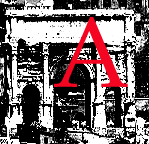 lthough historians of science have identified a general program of so-called mechanical explanation beginning with Galileo (if not before), it is important to understand the historically specific significance of mechanical explanation for nineteenth century physics. At this time, physicists sought to explain physical phenomena in terms of the structure of and laws of motion of a mechanical system. Explanation of the imponderables (heat, light, electricity, and magnetism) was considered incomplete unless presented in terms of the mechanics of rigid, elastic, or fluid bodies. In the nineteenth century, the many applications of mechanics to a wide variety of phenomena and the development of the generalized principle of energy conservation encouraged the hope that all natural phenomena might ultimately be represented in terms of mechanical quantities. To achieve this reduction became the explicit goal of many nineteenth century physicists.
lthough historians of science have identified a general program of so-called mechanical explanation beginning with Galileo (if not before), it is important to understand the historically specific significance of mechanical explanation for nineteenth century physics. At this time, physicists sought to explain physical phenomena in terms of the structure of and laws of motion of a mechanical system. Explanation of the imponderables (heat, light, electricity, and magnetism) was considered incomplete unless presented in terms of the mechanics of rigid, elastic, or fluid bodies. In the nineteenth century, the many applications of mechanics to a wide variety of phenomena and the development of the generalized principle of energy conservation encouraged the hope that all natural phenomena might ultimately be represented in terms of mechanical quantities. To achieve this reduction became the explicit goal of many nineteenth century physicists.
In Britain, moreover, a new awareness of relations between physical and mathematical models produced an ambiguity about the status of field theories that was of profound significance for theories of action at a distance favored on the Continent. Unsurprisingly, then, the relation of models to physical reality was of profound concern for nineteenth-century physicists. At this time, mechanical explanation supposed an ontology of material particles in motion as the substratum underlying physical reality.
It is possible to identify four senses of mechanical explanation at this time:
- as a theoretical structure of the universe based on the configuration and motion of point-like particles of matter and the forces acting between them
- as the postulation of mechanical models that rendered phenomena intelligible in a particular way — as analogous to steam engines, etc.
- as a way to avoid what were considered speculations about action-at-a-distance
- as a way to avoid speculation about the ultimate nature of matter.
Those using mechanical explanation in this last way appealed to the abstract formalism of Lagrangian analytical dynamics in order to show the impossibility of creating a unique mechanical model of any phenomenon. Equations of motion obtained with Lagrangian analytical dynamics were considered independent of any underlying structure of the material universe. Although the extent to which even thoroughgoing Lagrangians (such as Carl Friedrich Gauss and Leonard Euler) covertly subscribed to principles of mechanical explanation is certainly debatable, the more important point is that the taxonomy of imponderables that developed after Newton was no longer valid by the end of the nineteenth century. All phenomena that had involved imponderables at the start of the nineteenth century became, by 1900, questions of matter, energy, force, and motion.
a href="physintro.html">
Last modified 2 April 2002